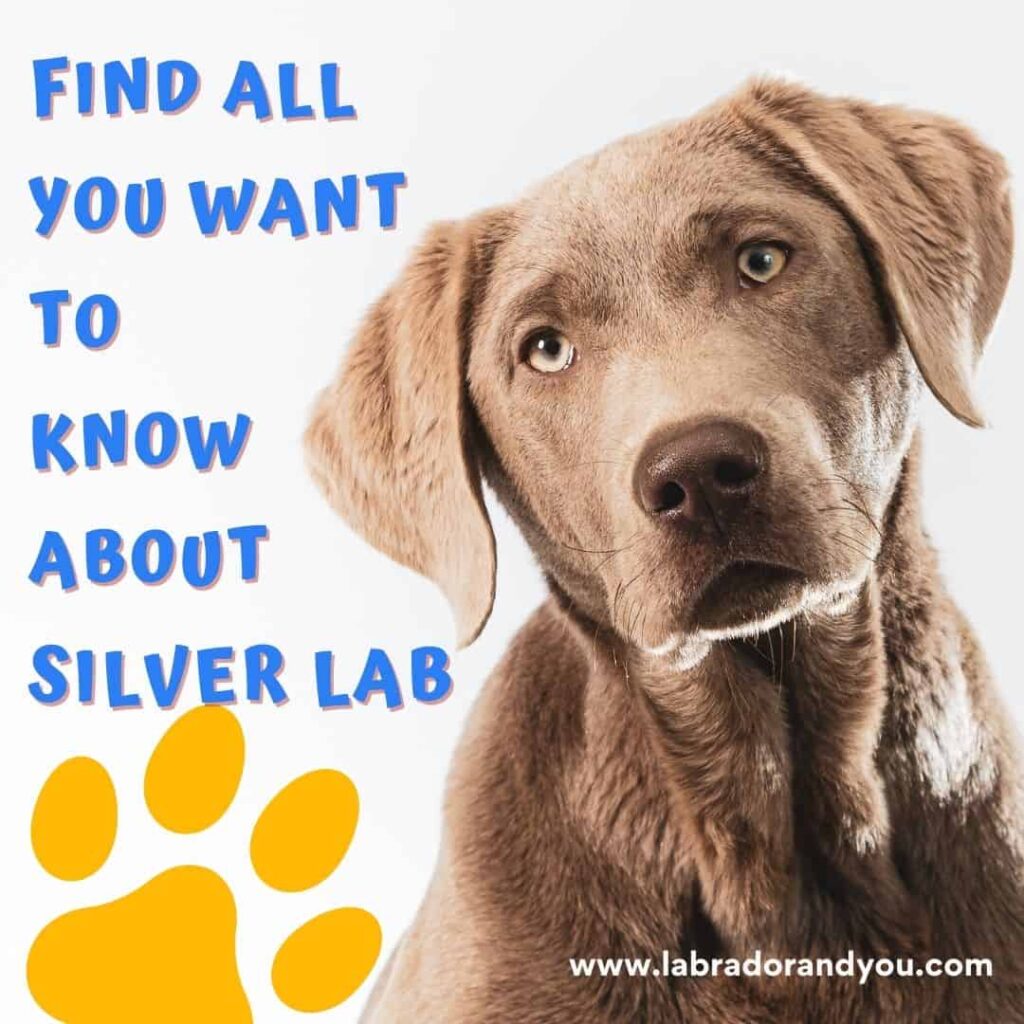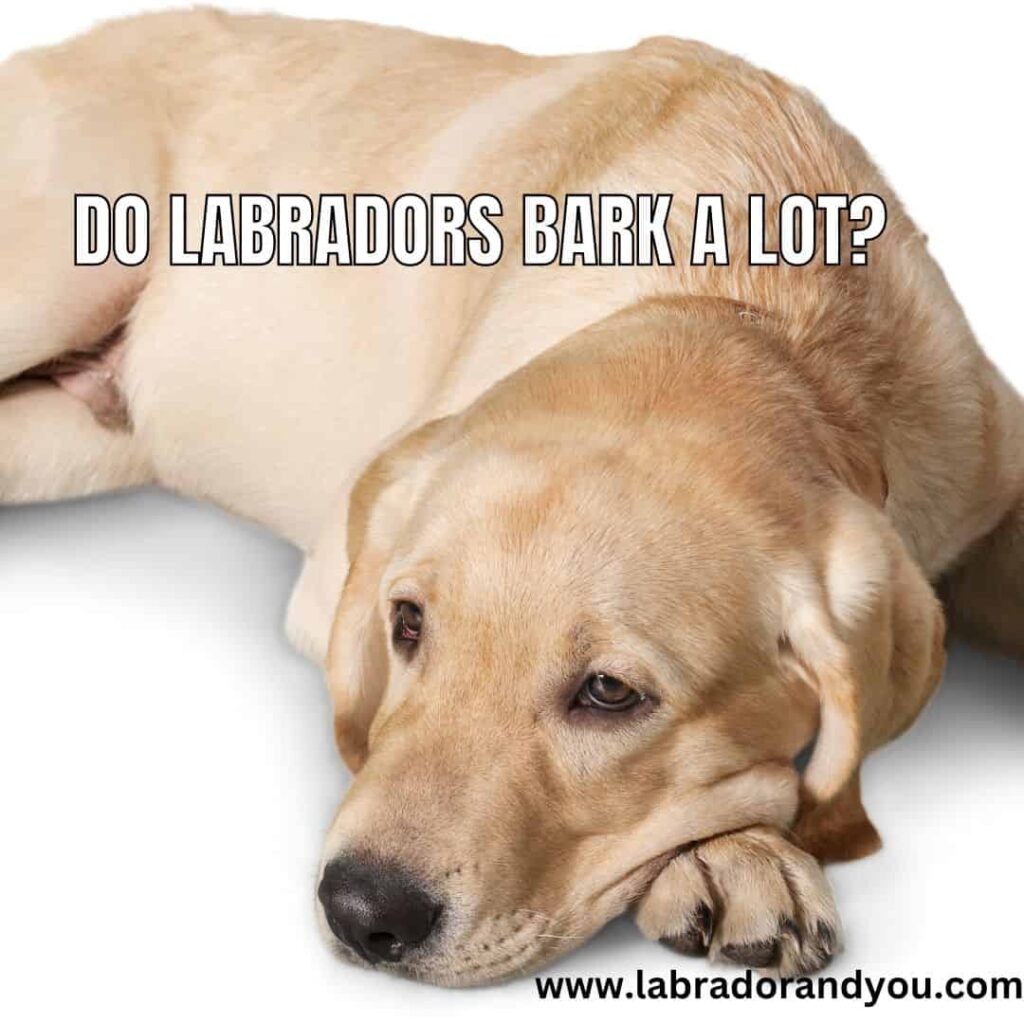We’re here to spill the beans on the nitty-gritty of keeping those floppy ears squeaky clean and itch-free. Here’s how to clean labrador ears properly!!
Gently lift the ear flap and inspect inside the ear canal for signs of infection like redness, swelling, or discharge. Using a dog ear cleaner solution and cotton balls, gently wipe out debris or wax buildup. Never use Q-tips, which can damage the delicate skin. After cleaning, dry thoroughly with a soft, clean towel or tissue.
Check that excess moisture is removed, as remaining moisture can lead to infection. Regular cleaning helps prevent infection and removes dirt or irritants. Be very gentle, as their ears are sensitive.
Labrador Ear Structure
Labrador retriever’s ancestors had upright and pointed ears like wolves. Labs witnessed an evolution of healthy ears that detected sound easily and were hygienic.
Their large and wide-open ear canals offer enhanced hearing. Modern Labs have been bred selectively to avoid the pointed ear structure as labrador ancestors. They have a covered ear canal with a soft and furry flap.
The dog’s ear flap gives them a distinct look. While the soft inner ear fuzz keeps away debris, it can also attract ear wax. It can cause a sticky trap of hair, gunk, and parasites.
Dogs With Hairy Ear Canal
Excess hair inside the dog’s ears also causes trouble. While some hair stops the debris, others can cause blockage.
Dog owners easily get tempted to cut the dog’s inner ear hair. However, it must be done with caution. If the cropped hair enters the ear canal, it can invite further problems. Consulting a vet is best for optimal ear health.
Dogs With Small Ear Canals
Some labs can have small ear canals due to their small heads. The small size allows the wax to accumulate, inviting bacteria. Too much wax accumulation causes pain and hearing issues.
Dog Ear Problems
Labrador’s floppy ears offer a nice and warm environment for germs. Ear wax, dirt, and grime collect in the inner ear and ear canal. The same leads to ear problems in labradors. Cleaning the dog’s ears regularly will keep them healthy.
How Do I Tell When My Dog’s Ears Need Cleaning?
- Head shaking: Is your Lab shaking its heading and scratching its ears often? It indicates the ears are itching and need cleaning.
- Smell: Is there an unpleasant odor coming from your Lab’s ears? They likely need cleaning, as bacteria and yeast infections generate odor.
- Build-up: Some wax build-up in the ear is normal. Clean it up if you see a lot of dark-colored wax in your Lab’s ears.
- Redness, Swelling, and Discharge: These symptoms scream ear infection and should be taken seriously. These can be very painful for your Lab.
- Sensitivity to Touch: Is your Lab reacting upon touching their ears? Their ears require cleaning if they are flinching away or shaking their head.
How to Check Your Dog’s Ears?
Check your dog’s ears at least weekly. It will prevent ear problems from taking a serious shape. Follow the below steps to check your dog’s ears.
- Make the Labrador stand, sit, or lay down comfortably.
- Start with stroking his head calmly.
- Give him a treat or piece of kibble for distraction.
- Lift the ear flap and look inside the ear canal.
- A healthy ear is pale pink and won’t smell.
- A healthy ear is free from wax, dirt, debris, or discharges.
- A few flexes of wax around the outer ear are common, though.
- Your dog must not react as though in pain during the ear handling.

Is It More Than Dirty Ears?
Sometimes there can be more than simply dirty ears. Consult your dog’s vet upon noticing the below symptoms.
Ear Infection
An infected ear is the most common issue in dogs. It can be fungal or bacterial. Ear infection symptoms are –
- Sticky discharge from ears
- Too much head shaking
- Ear scratching
- Red and inflamed ears
- Rubbing ears on the surface floor
- Unpleasant ear odor
- Bleeding from the ear
Ear Mites
Well, ear mites are small parasites found in the ears of mammals. They grow on wax, shed skin cells, and oil inside the ear. A few signs include the following –
- Head shaking
- Ear scratching
- Rubbing ears on the floor surface
- Dark and grainy discharge from the outer ear
How Can You Prevent Ear Infections in Your Dog?
The best way to prevent ear infections is through a regular cleaning process. A labrador’s long ears make them prone to ear-related issues. Clean the ears once a week to keep them infection-free.
Cleaning Materials You Need To Clean Labrador Ears:
Here are a few supplies you should always prepare before cleaning your Lab’s ears:
Ear-Cleaning Supplies:
- Cotton balls/ Q-Tips: These are essential and gently remove wax and dirt.
- Ear cleaning solution: Specialized solution formulated to break down wax and clean without irritation.
- Ear drops: These are vital to managing ear infections. Ask your veterinarian for their recommendation.
- Clean Towel: To protect your Lab’s fur and clean its ear area.
Should You Use Hydrogen Peroxide To Clean Dog Ears?
It is a debate whether or not you should use hydrogen peroxide (H202) to clean a pup’s ears. Some veterinarians agree but suggest doing it under a doctor’s care. Unless your veterinarian specifically instructs you, you shouldn’t clean your dog’s ears with H2O2.
After receiving consent, a dog can have its ears cleaned using a combination of one part H2O2 and one part water. Some opine cleaning dogs’ ears with H2O2 is never good as healthy skin cells get irritated. The ear tissue is delicate and can be harmed if it comes in contact with H2O2.
Dog Ear-Cleaning Solutions:
- Vet Solutions Ear Cleansing Solution: It helps dissolve wax build-up and remove dirt and debris. It contains aloe, which helps moisten the ears.
- Pet MD Otic-Clean Ear Cleanser: Made with a mild surfactant, it breaks down debris and deep cleans your dog’s ears.
- Zymox Otic Ear Solution: Formulated with ingredients to relieve irritating ear infections. Apply the solution to your dog’s ears and massage the area until absorbed.
Special Cleaning Solution For Dog’s Ear:
These homemade recipes are safe to use and contain ingredients to keep your Labrador’s ears clean:
Apple Cider Vinegar and Water:
Combine three parts of water with one part of apple cider vinegar to prepare this.
Tea Tree Oil and Witch Hazel:
Witch Hazel has many antiseptic properties, while Tea tree oil keeps your Labrador’s ears free from infection. Mix equal parts of both in a bowl to make this solution. Use this as an ear wash for your Lab.
Coconut Oil:
Coconut oil is a natural moisturizer that can keep your Labrador’s ears healthy and clean. Massage a small amount of coconut oil into your Lab’s ears. Then, leave it for a few minutes before wiping it off with a soft cloth.
How To Clean Dogs’ Ears With Canine Ear Cleaner?
Having the necessary supplies before cleaning your Labrador’s ears is vital.
- Start by dripping a few drops of the cleaning solution into your Lab’s ears. Massage the base of your Lab’s ears for a few minutes to let the solution reach further into the ears.
- Put some cotton balls inside your Lab’s ears. It helps to absorb liquid and dirt.
- Gently wipe the inside of your Lab’s ears using cotton balls or swabs.
- Use a dry cloth or cotton balls to remove the excess liquid or dirt.
- Give your Labrador a treat or two as a reward for being so cooperative.
How To Clean Dogs’ Ears With Warm Water?
Warm water is an effective way to clean. It is the ideal solution for Labradors prone to ear infections and wax build-up.
- Start by filling a cup with warm water. Ensure it’s not too hot, which can hurt your Labrador and damage their ears.
- Dip a cotton ball/swab into the cup of warm water.
- Gently squeeze the cotton ball/swab into your Lab’s ear and wipe away any dirt and debris.
- If your Lab’s ears are full of wax or dirt, you may need to repeat this process a few times.
- Use a dry cloth or cotton balls to remove the excess water or dirt.
How to Hold Your Dog While Cleaning?
The best way to hold your Lab for ear cleaning is to have them sit on the ground before you.
- Place your hand over their neck and press your finger to their throat.
- Then wrap your arm around them so that their head is close enough for you to reach their ear.
- If you’re having trouble holding them, use a leash to keep them while you clean their ears.
3 Facts To Keep In Mind While Cleaning Your Dog’s Ears:
The most important thing is to remain calm and patient.
Train Your Dog to Accept Handling:
Training them to accept handling in this area is essential. Teaching them to enjoy helps make cleaning smoother and less stressful.
Perform an Ear Examination:
Before cleaning, you must examine your Lab’s ears for any signs of infection or injury. If you notice any redness, swelling, foul odor, or discharge from the ears, take them to the vet.
Is There Excess Hair Needs Removing:
Labradors have excessive hair in their ears, making cleaning them challenging. Use a pair of hair clippers to remove the excess fur before washing.
Here’s The Process To Remove Excess Hair From Lab Ears
A dog may have excess hair outside their ear. Gentle scissors can be used to trim the hair. It can be dangerous if your dog moves around too much. Too long hair outside the ear invites excess moisture and bacteria and needs trimming.
Can You Take Out Deep Internal Ear Hair? Is It Safe?
Some dogs have hair growing out of their ear canals. Some suggest plucking it, while others recommend avoiding it. Consulting a groomer or vet is an excellent option. Here are a few things to know before doing so –
- Internal hair is not a threat in some cases and can be left alone.
- Tangles and mats can sometimes be formed if the hair is not trimmed or plucked regularly.
- The index finger and thumb can remove excess hair on the ear flap or inside.
- Pull out hair in small amounts each time to prevent pain.
- Remember to pull the excess hair in the hair growth direction.
- Do not remove hair present over a half inch into the ear opening.
- Deep internal hair must not be plucked without the vet’s advice.
Step By Step Instructions for Cleaning Your Dog’s Ears
Begin cleaning once you have inspected and prepped your Lab’s ears.
How To Clean A Dog’s Outer Ears:
- Use a cotton swab to clean the outer part of the ear.
- Dip a cotton swab in the cleaning solution and gently clean around the ear canal opening.
- You can also use a soft cloth to clean the outer part.
- Use a dry cloth or cotton ball to dry the outer part of the ear.
So How To Clean a Dog’s Inner Ears?
- Take a cotton swab and dip it into the cleaning solution.
- Gently clean the inside of the ear canal, careful not to push the swab too far down the ear.
- Use a dry cloth or cotton ball to dry the inside of the ear.
How to Have an Easy Dog Ear Cleaning Session?
Many dogs do not enjoy ear cleaning, especially those needing routine cleaning. Handling your dog’s ears early is best to avoid later trouble.
How to Get a Puppy Used to Having His ears cleaned?
- When the new puppy sits on your lap, stroke his ears gently. Lift the ear flap and perform a visual check.
- If the puppy remains calm, reward his behavior.
- This will make him used to ear inspections.
How to get an older dog used to having his ears cleaned?
- Start with teaching a reliable sit command to deal with older Labs.
- Ensure your lab sits happily on the same level as yours. You must have your hand on the dog’s body part where he feels comfortable.
- With gradual sittings, have your hands closer to his ears and head.
- Make progress only with which the dog is comfortable.
- Remember to reward the dog if he is patient and calm.
- Now repeat the process with cotton wool pads or ear cleaner in hand.
- Have lots of high-value rewards ready for these sessions.
- How far and quickly you will move depends on the dog’s reaction.
- A rewarding experience allows the dog’s confidence to grow. It becomes easier when the dog trusts you.
Things To Avoid Doing During Ear Cleaning
- Avoid inserting Q-tips, cotton buds, and solid instruments into the dog’s ear canal.
- Avoid deep or frequent ear cleaning as it can irritate.
- Pet owners must be able to see the entire cotton swab while cleaning.
- Do not clean a dog’s ear if you see signs of ear infection, swelling, or irritation.
FAQ:
What can I use to clean my dog’s ears at home?
You can use a combination of mild soaps, over-the-counter medications, and cotton pads to clean and disinfect your dog’s ears.
What is safe to clean a dog’s ears with?
Only use products approved by your veterinarian. Using products specifically formulated for cleaning a dog’s ear is essential.
How do you clean a labrador’s ear?
Perform an examination and remove excess hair. Use a cotton pad dipped in the cleaning solution to clean the outer part. Then clean the inside of the ear canal with a swab. Finally, dry the ears with a cloth or cotton ball.
Can I use hydrogen peroxide to clean my dog’s ears?
A. Hydrogen peroxide should not be used as a regular solution to clean your dog’s ears. This can irritate and dry out the ear canal and cause skin cracking. It should be used in situations like cleaning wax buildup only with the vet’s approval
How often should I clean my dog’s ears?
A. Clean your dog’s ears at least once a month or during a buildup of wax or dirt. Consult your vet if you find any signs of infection or injury.
Do Labradors ears need to be cleaned?
A: Labrador ear cleaning prevents the accumulation of dirt and debris. Regular cleaning will ensure there is no ear infection. Dogs that swim frequently must get their ears cleaned more adequately.
What is the black stuff in my Labradors ears?
A: Black or dark brown ear wax is associated with a bacterial ear infection. Consult a vet if your dog has black-colored ear wax.
Why are my labs ears dirty?
Allergies, polyps, mites, excessive bathing, wax production, and swimming can dirty the ears. Inadequate ear cleaning can lead to an ear infection.
Why does my dog have thick black gunk in his ear?
Malassezia infection can cause a thick black waxy material in a dog’s ear. They are itchy and have a yeasty smell. A dog is constantly seen shaking his head and scratching his ears during this condition.
Author Profile
- Site Owner And Dog Lover
-
Aritra, the founder of Labradorandyou.com, is a lifelong dog lover whose passion ignited for Labradors for their loyalty and intelligence. With extensive research and personal experiences, Aritra has become a Labrador expert, offering a rich resource on the breed. Labradorandyou.com provides reliable, timely, and evidence-based information, including Labrador-specific product reviews, training techniques, and care tips.
Labradorandyou.com was born out of Aritra's passion and his desire to share his profound knowledge about the breed. The site serves as a comprehensive resource, offering a wealth of up-to-date information for Labrador owners and enthusiasts alike
Also by the author
-
 Lab-TypesNovember 17, 2023Old Dog Seizures: Causes, Symptoms, and Treatment Options
Lab-TypesNovember 17, 2023Old Dog Seizures: Causes, Symptoms, and Treatment Options
-
 Lab-TypesNovember 17, 2023Why Is My Dogs Poop Yellow? 8 Reasons & Solutions
Lab-TypesNovember 17, 2023Why Is My Dogs Poop Yellow? 8 Reasons & Solutions
-
 ReviewsNovember 17, 2023The Only Hill’s Science Diet Review You Need To Read
ReviewsNovember 17, 2023The Only Hill’s Science Diet Review You Need To Read
-
 Lab-TypesNovember 17, 2023How To Adopt An Emotional Support Dog?
Lab-TypesNovember 17, 2023How To Adopt An Emotional Support Dog?





